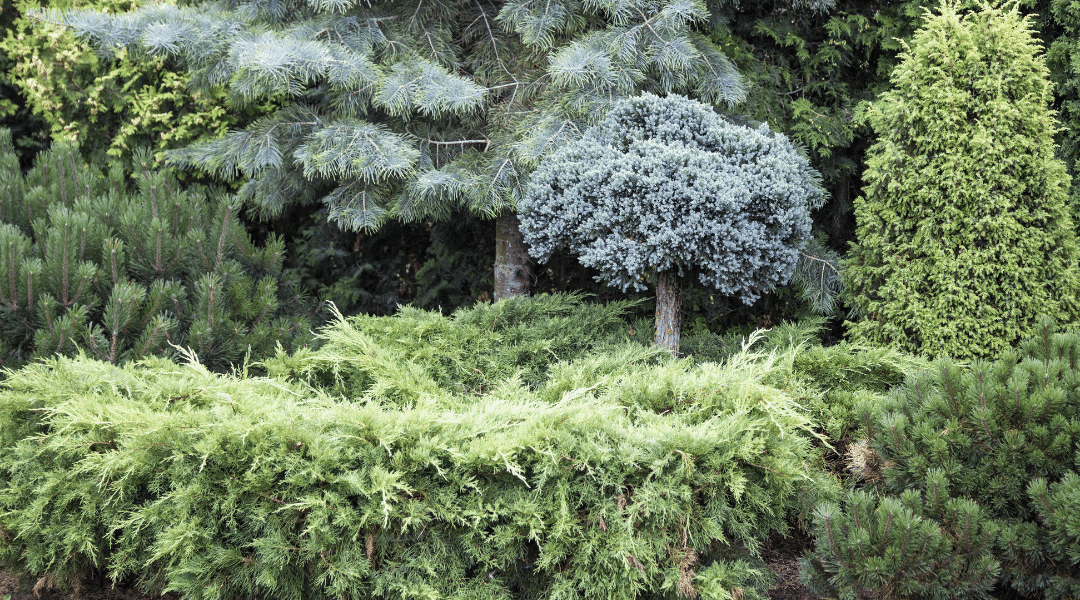Leafy trees get most of the praise in the summer, while evergreens stand modestly in the background. In comparison to their leafy cousins, evergreens seem subtle, hard to get to know, and even boring. But when you take a closer look, these stalwarts of the tree world offer beautiful gifts for many kinds of landscaping!
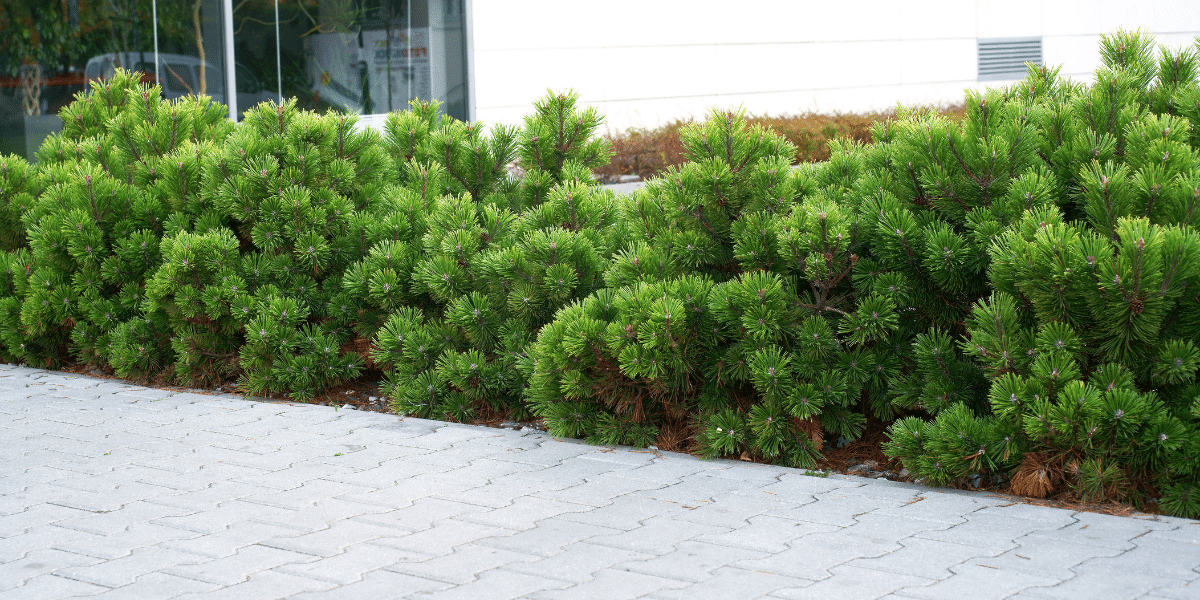
Pine
Pining for all-season color? Pines are impressive evergreen trees that offer habitat for birds and squirrels, as well as a fresh scent that reminds you of a forest. Species like the White and Red pine grow upwards of 60 feet, while the Mugo pine remains a shrub, reaching 4 to 10 feet high, depending on conditions.
In landscaping, these evergreen trees provide shade, shelter from the wind, a screen for privacy, and abundant green boughs for Christmas crafts. Plus, you can boil the young needles for delicious tea rich in vitamin C.
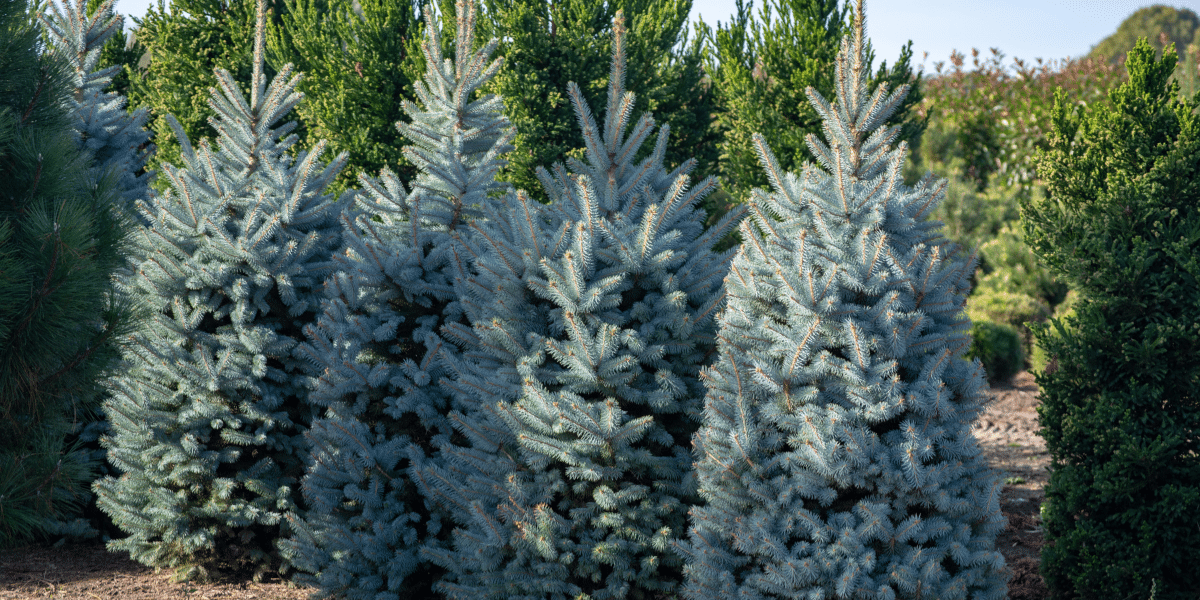
Spruce
Everything a pine can do, spruce can do as well, all with its own particular style. White, Blue, and Black spruce can reach upwards of 60 feet and beyond. Their smaller needles make a denser coverage for wind, noise, privacy, and shade.
In summer landscaping, they bring a cool, shady feel to your yard. While in winter, these trees brighten the landscape with evergreen boughs. Dwarf spruce offers year-round greenery for landscaping in the shrub layer.
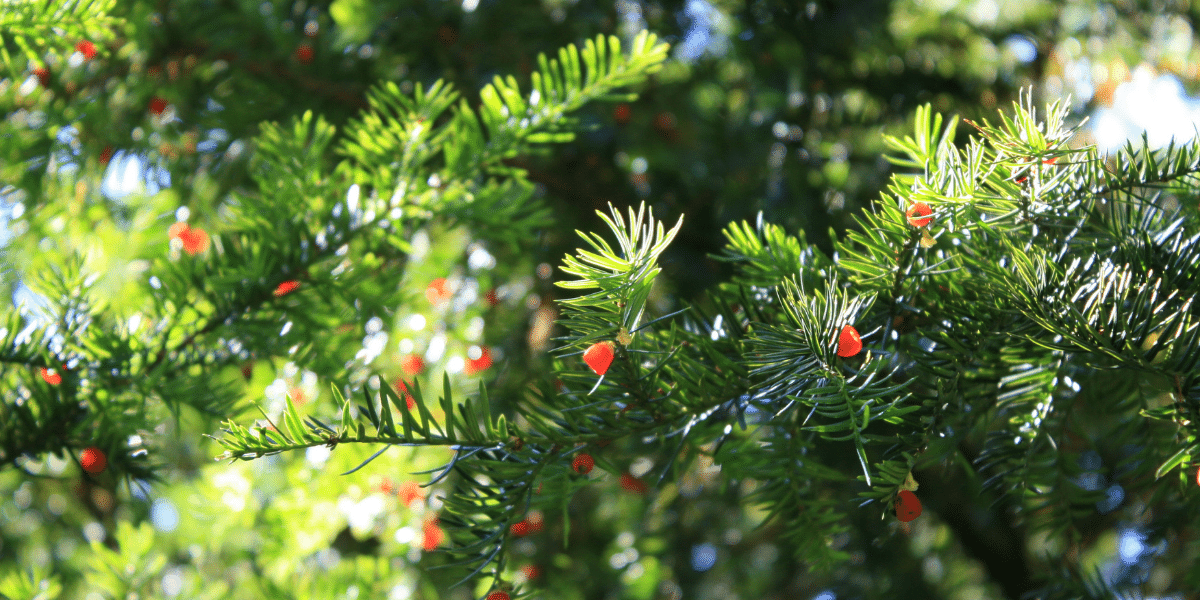
Yew
As yew trees have more flexible needles, they bring a softer texture to your yard than pine and spruce. Some varieties are popular as landscaping shrubs, while others can grow upwards of 10 feet tall—perfect for privacy screens or property borders. They’re adaptable to many kinds of landscaping and thrive in a variety of conditions.
They also have a long history as decor at Christmas time. And like spruce and pine, they bring bright green to your yard in winter and display red berries too.
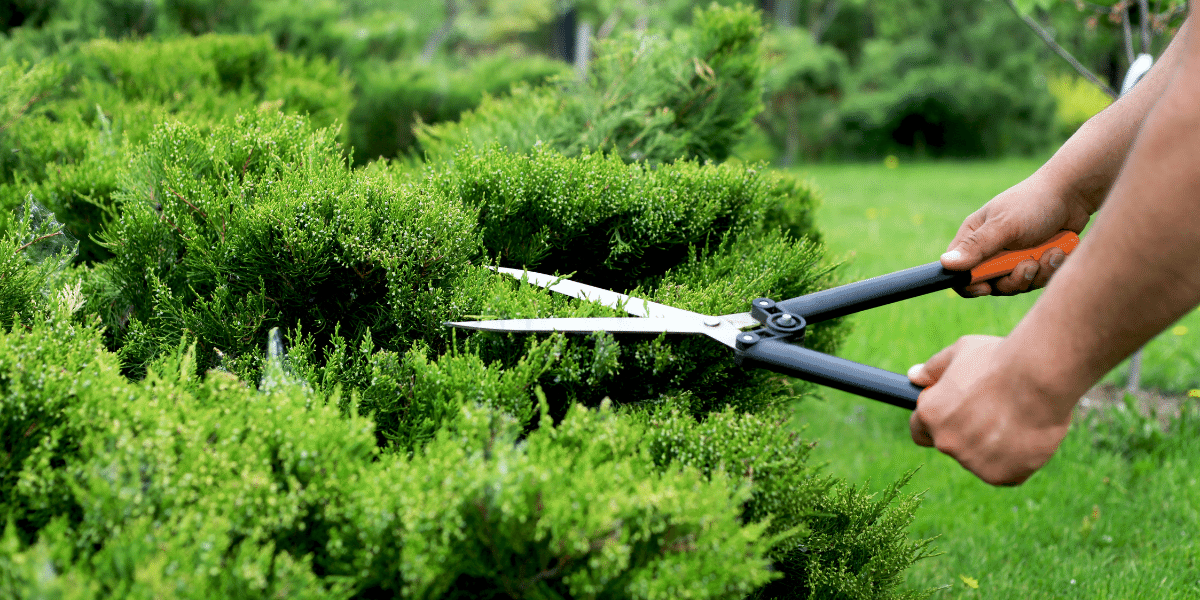
Juniper
These versatile evergreens are common in landscaping but often underappreciated and rarely used to their full potential. Junipers can weave along the ground, cascade over stonework, sit upright like a shrub, or take the shape of a conical or columnar tree.
They range in color from silvery blue to emerald green to green-yellow. They’re adaptable to many growing conditions and bring a manicured look to any landscaping style. Plus, you can easily shape them to compliment the habit of surrounding flowers. Junipers make beautiful companions to many other plants but are just as deserving of the spotlight.
Evergreen Landscaping Year-Round
We often think of landscaping as a summer affair, but evergreens open our yard to year-round designs. Few gardeners imagine them as the centerpiece of their landscaping. That’s fine—perhaps it’s natural for leafy trees to take the limelight in summer. But when fall blows them away, your evergreens reveal a second design that comes to the foreground. It’s possible to design your yard with that hidden layer in mind.

The Practical Uses of Evergreens and Beyond
Evergreen trees have always served as important privacy screens, noise buffers, wildlife habitat, and windbreaks. But their role doesn’t have to be utilitarian. Once we appreciate them for what they are, evergreens offer a whole new language of beauty. Needly, rugged, rough, serene, cool, and shady—the world of evergreen trees is large, and their benefits to landscaping are just as diverse.
The fall is one the best times for planting new trees and shrubs. Visit our garden centers in Chicagoland to see our evergreen trees in person!
INFORMACIÓN ADICIONAL:
Why is my evergreen turning brown?
Platt Hill Nursery es el principal centro de jardinería y vivero de Chicago.

